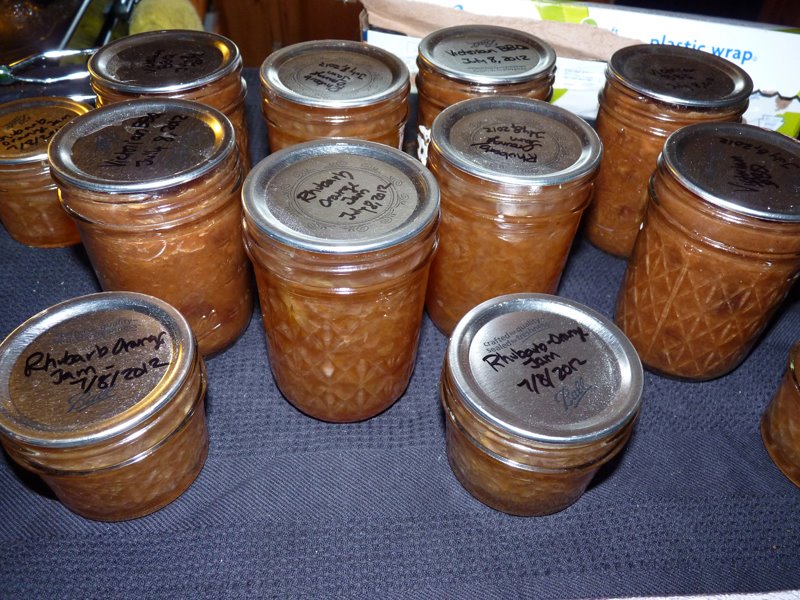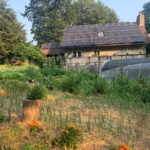
Our eating practices can be incredibly environmentally and personally destructive. In the typical food system in America, we ship food from all corners of the earth burning fossil fuels, we exploit workers and growers, we depend upon multinational corporate food systems who care more about profits than good heath or environmental stewardship, and we eat foods pumped full of pesticides, chemicals, and other things that slowly degrade our lands and bodies. Food is a big issue, and recently, alternative models, including locally-based diets, have become a central part of the sustainability movement. People who eat locally call themselves “localvores”, although definitions of what is local are based on the area’s climate, resources, etc. For example, I try to keep my diet to 150 miles, but someone living in Alaska might have a local diet of far greater due to that region’s scarcity.
For the last five years, I’ve been slowly working to shift my family’s diet to 100% local eating. I’m not sure if that’s a reality while working a full time job, but in the summers, I’m pleased to say we are usually upwards of 70-80% local. In the winters, this is closer to 40-50%. A lot of people ask me about how to go about doing this because the task seems overwhelming, so I wanted to blog about it.
First and foremost, when making any lifestyle shift from the mundane to the radical, you might see this shift as similar to climbing up a mountain. A mountain climb can be difficult, yes, but you don’t do it all at once and you don’t do it without preparation. I suggest the following six principles to making a lifestyle transition to local foods:
- Recognize your resources and challenges. This is critical to making the transition to local foods. You want to see what is available to you already–do you have land for growing your own food? An excellent CSA? Good farmer’s markets? Local farmers who sell produce from their land? You also want to identify any challenges you have: time, a limited budget, harsh winters with no fresh veggies, no good growing space, etc.
- Educate yourself & your family. As you are staring to formulate your plan, you want to spend a lot of time educating yourself about food, in general. You might do some reading on how to tell a good organic food from a bad one, the higher ecological footprint of foods, and above all, understanding what is in season and able to be grown locally, and when. If you plan on growing your own food, you’ll also want to educate yourself on various preservation methods: canning, root cellaring, dehydrating, fermenting, etc.
- Observe your current eating habits. One of the other things I did early in this process was to spend time documenting and observing my family’s eating habits. This allowed me to formulate a plan that targeted certain kinds of foods. For example, we eat a lot of tomato products, so we began canning our own tomatoes. We also ate a lot of cereal products, so we worked to find alternatives (like getting local oats and making our own granola).
- Create a plan. Having a plan in mind is good to set goals and to think about your targets. In making the transition to local foods, you are making a pretty substantial lifestyle change, and this change takes time and patience to enact. You may also have to deal with family members who aren’t as committed to the change as you are, and find good alternatives.
- Take one small step at a time. Mountains are not climbed in a day; nor will you make the transition to local foods in one day! Be realistic with your goals, and remember that a small, lasting change is better than a drastic one that you are unable to continue. You should also think about the changes you are making and how they impact your other family members. The key is to get them on board and agreeing to the changes–so slow changes over time might work better for you.
- Be determined and stay focused on your goal. I really believe that success is 99% determination, so keep that in mind! If you fall, get yourself back up and keep going.
What has really assisted me in this process is by making slow, dedicated shifts over time. Each year, I take on a “project’ that assists my family in making the transition from heavy super-market reliance a local, sustainable approach.
My first big shift was seeking out any local sources of easily accessible food. I rejoiced when I found a year-round farmer’s market with online ordering that offered veggies, fruits, locally-grown and milled flour, cheese, vinegar, eggs, teas, local meats, herbal remedies, garden supplies, and assorted other wonderful things. The online local market combined with Farmer’s Market shopping immediately allowed us to shift close to 30% of our eating. The online market really gave us a jump start on this process. We did have to learn how to cook differently with different ingredients available seasonally, but that part wasn’t too difficult (although there is no doubt that by March we are totally sick of winter squash, apples, carrots, and potatoes, lol!)
A second big shift was declaring tomato independence. After observing my family’s eating habits and recognizing how many tomatoes we consumed, I aimed, last summer, to be 100% tomato independent. This meant that, in August and September, I would have to spend time canning and drying tomatoes. I am pleased to say that in this last year, we purchased no tomato products–all came from our own garden.
Preserves and Jellies were another easy early step–they are easy to can and, in my area, wild berries are abundant.

Snacks and convenience foods are rarely local, and so you’ll really have to think about shifting your eating behavior in this way. I cut out a lot of the junk food, which is great for my health. I usually, now, snack on local popcorn (some of which I grow myself and some of which is grown nearby) or on dehydrated or fresh fruits and veggies. I still do a lot of baked goods (especially with access to great locally milled flour). My husband has been a more difficult case. He is very set in his ways, and wants to eat Life cereal for breakfast every morning and Lean Cuisines for lunch every day. Since we both work full time, this has been an ongoing challenge.
Our focus for this year is dairy. I love dairy, and I’m not going to give it up. Local dairy has been more tricky, mainly because of a lack of time to seek it out. Our CSA offers some raw cheeses and eggs (which can also be found at my local farmer’s market), but butter has been a real problem. I stopped drinking milk entirely because I wasn’t willing to buy it at the supermarket (I switched to rice milk for cereal, but that’s not local, so I’m still working on this). I’m currently researching goat milk shares, cow milk shares, and educating myself on butter and cheese making. We also recently began raising 4 chickens, which should provide our family with all of the eggs that we need.



Good approach. I hope more people start doing this.